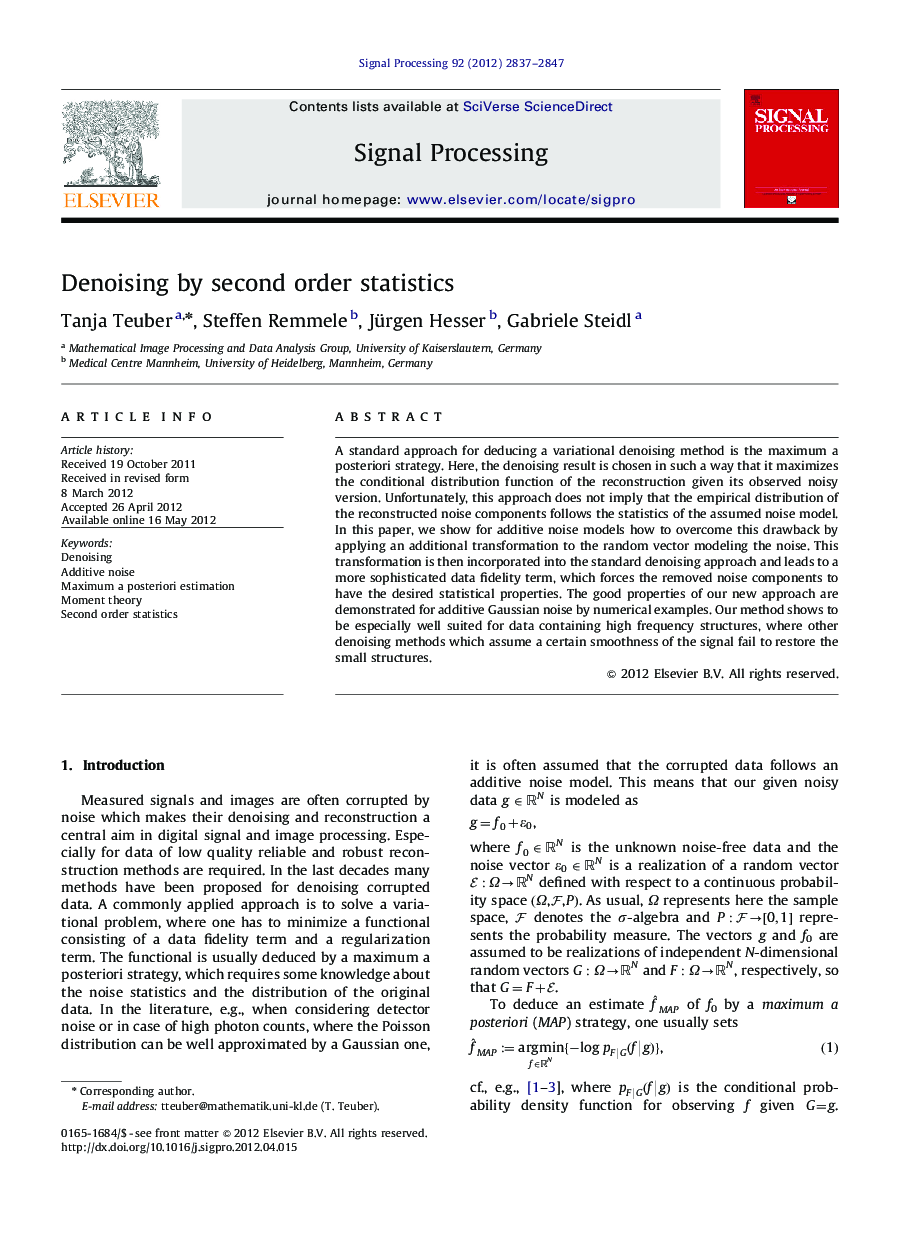| Article ID | Journal | Published Year | Pages | File Type |
|---|---|---|---|---|
| 562647 | Signal Processing | 2012 | 11 Pages |
A standard approach for deducing a variational denoising method is the maximum a posteriori strategy. Here, the denoising result is chosen in such a way that it maximizes the conditional distribution function of the reconstruction given its observed noisy version. Unfortunately, this approach does not imply that the empirical distribution of the reconstructed noise components follows the statistics of the assumed noise model. In this paper, we show for additive noise models how to overcome this drawback by applying an additional transformation to the random vector modeling the noise. This transformation is then incorporated into the standard denoising approach and leads to a more sophisticated data fidelity term, which forces the removed noise components to have the desired statistical properties. The good properties of our new approach are demonstrated for additive Gaussian noise by numerical examples. Our method shows to be especially well suited for data containing high frequency structures, where other denoising methods which assume a certain smoothness of the signal fail to restore the small structures.
► We present a new approach for deducing data fidelity terms for variational denoising methods. ► Our approach extends the classical MAP approach by an additional variable transformation. ► Hereby, the removed noise is forced to follow the statistics of the assumed noise model. ► Examples for additive Gaussian noise show the good properties of our new approach. ► It is demonstrated to be particularly well suited for data containing high frequency structures.
